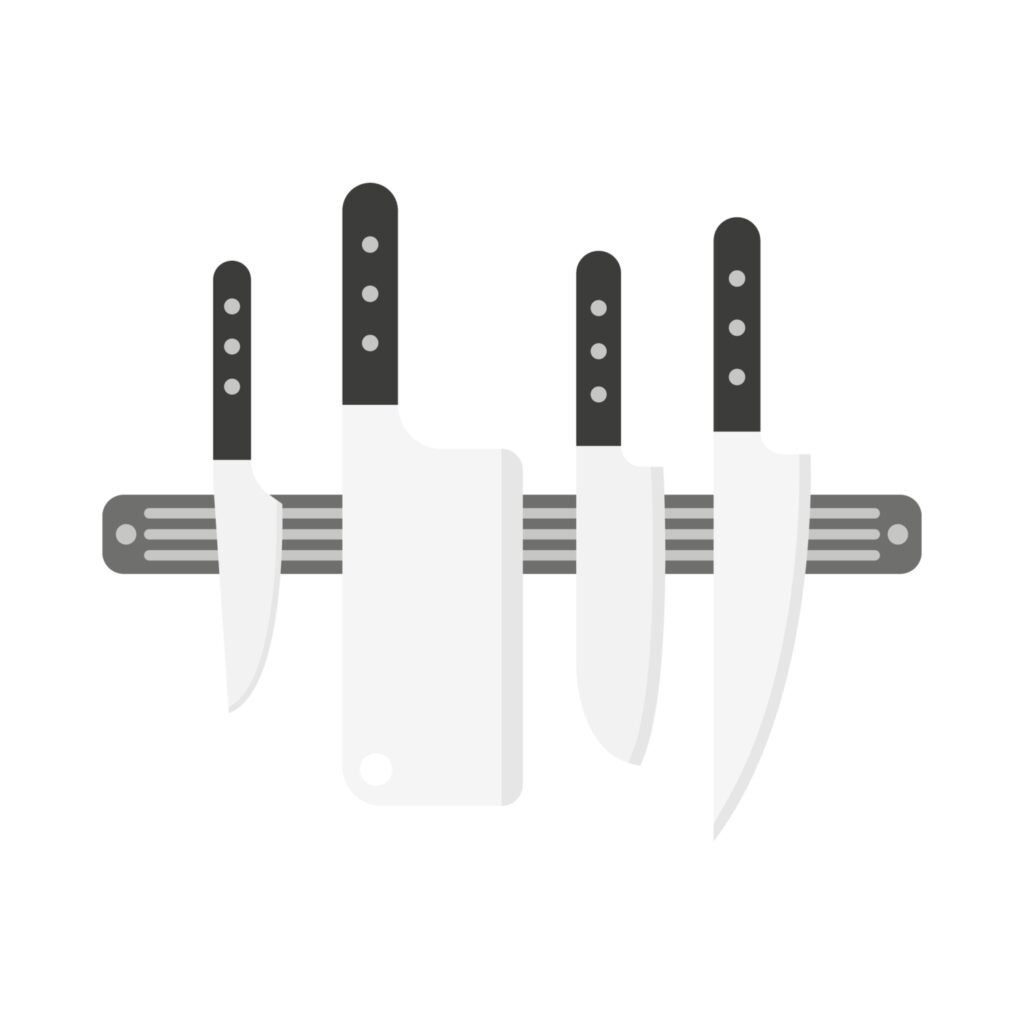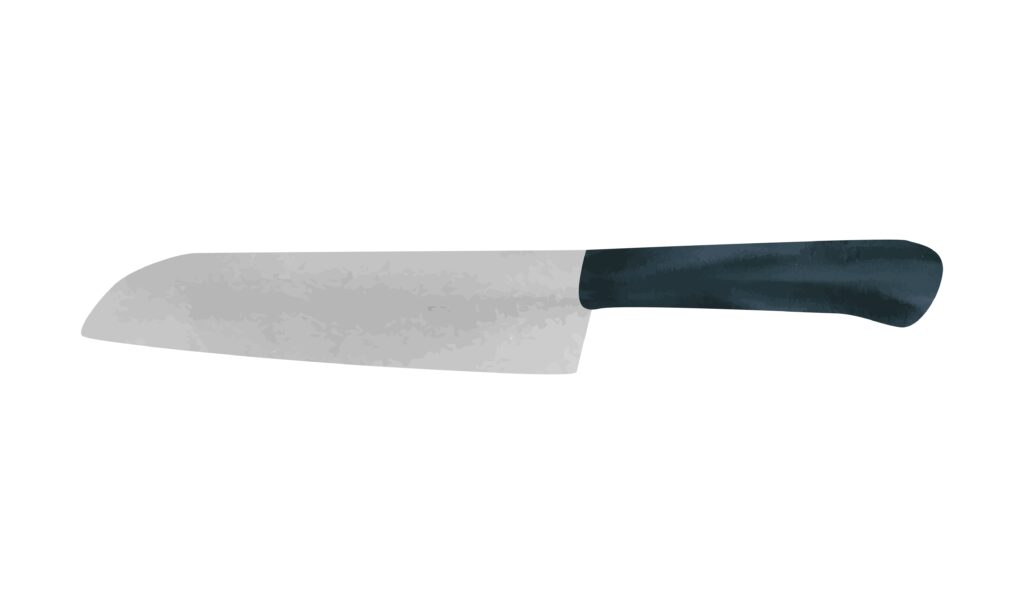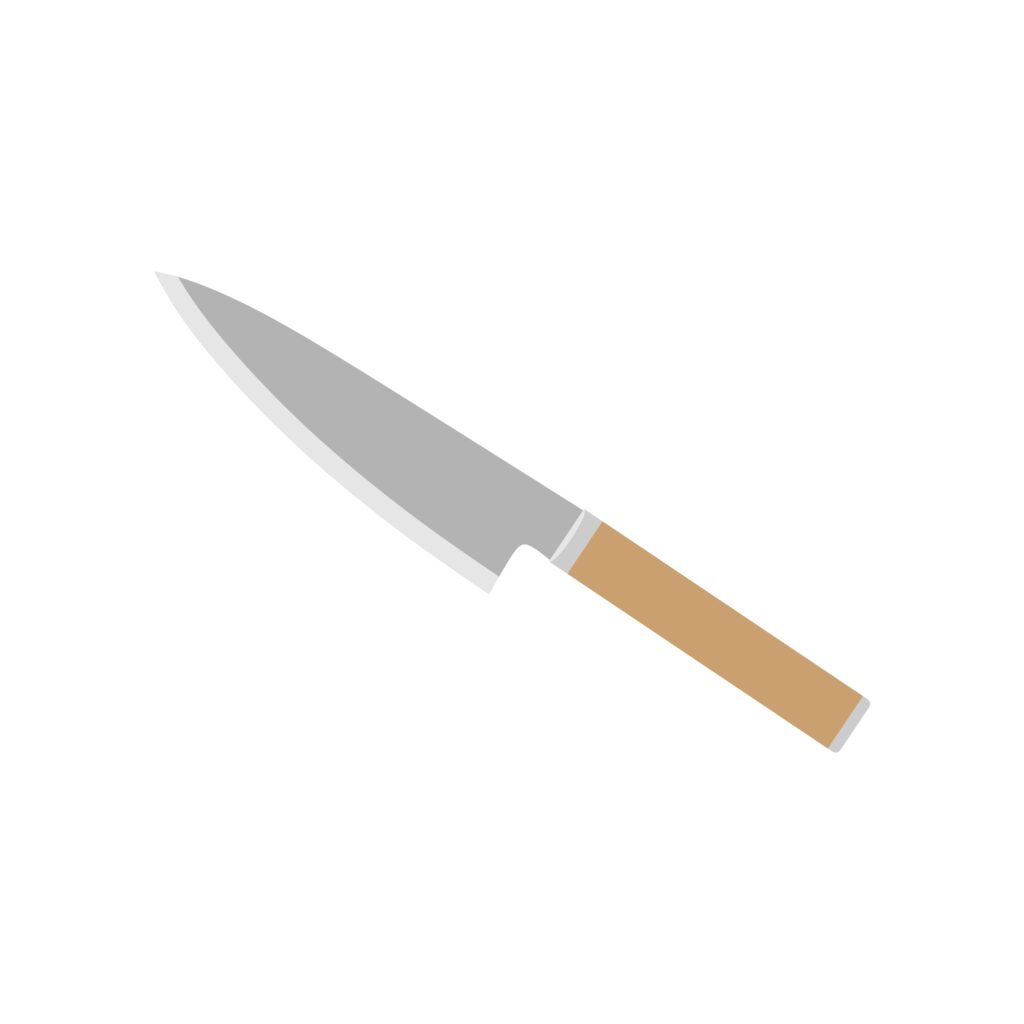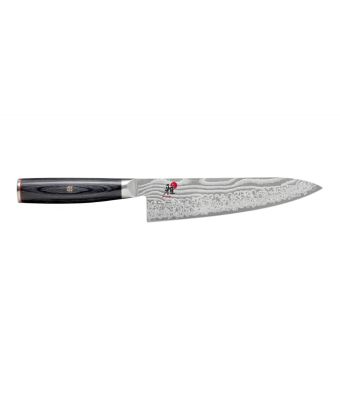Types of Japanese Knives: A Complete Guide

Japanese kitchen knives (sometimes known as hōchō or bōchō) are among the finest that you can buy, usually made from much tougher steel than their European counterparts, which makes them thinner and lighter, but most importantly, sharper.
Top chefs often use Japanese knives, as they allow for a much cleaner cut that doesn't tear or damage their ingredients. So why not bring that precision and class to your own kitchen?
Here's our ultimate guide to everything you need to know when purchasing Japanese kitchen knives.
Anatomy of a Japanese Kitchen Knife
To begin with, let's take a look at what sets a Japanese knife apart from a Western one.
Generally speaking, European or American knives are better suited to heavy-duty tasks, while a Japanese knife is usually better for more delicate and specialised tasks.
One big difference between Japanese and Western knives is that Western knives usually have a 'bolster' between the handle and the blade, but Japanese knives generally don't.
The bolster adds weight to the knife and balances it out, but Japanese knives are already balanced, so this extra weight isn't needed.
The handles of Japanese knives are also more likely to be made from wood and are often larger to compensate for the weight loss caused by the lack of a bolster.
In terms of the blade, Japanese knives are usually flatter and often have a single bevel, which means that the blade tapers only to one side rather than both.
Why are Japanese Knives so Popular?
Japanese knives have gained immense popularity worldwide due to their precision, sharpness, and craftsmanship. There are several reasons for their appeal:
1. Sharpness
Japanese knives are known for their extremely sharp edges, often honed to a finer angle than Western knives. This sharpness allows for cleaner, more precise cuts.
2. High-Quality Steel
Many Japanese knives are made from harder steel compared to their Western counterparts. This makes them thinner, lighter, and able to hold a sharp edge longer, although they may require more care to avoid chipping.
3. Craftsmanship
Japanese knives are deeply rooted in tradition, often crafted using techniques derived from centuries-old sword-making methods. This craftsmanship results in not only functional tools but also works of art.
4. Specialisation
Japanese knives are often designed for specific tasks, making them excellent fish knives, Vegetable knives and slicing knives. This allows chefs to choose the right tool for each job, resulting in better performance and less damage to ingredients.
Japanese knives are highly sought after by both professional chefs and home cooks. They allow them to achieve cleaner cuts, enhance presentation, and use a tool with such a rich history.
Types of Japanese Knives
Considering the nation's expertise, it's no surprise there are many different Japanese knife styles. In this section, we explore the most popular knives, their uses, and their features.
Santoku
One of the best-known Japanese knives, the santoku knife, can be used to mince, dice, and slice various ingredients such as fish, vegetables, and meat.
Their blades are usually between five and eight inches long, with a flat edge and a blade curved at about 60 degrees, similar to a traditional chef's knife.

Gyuto
Gyuto literally translates as 'beef sword', which refers to its origins in preparing raw meat and fish. However, it is widely used as an all-purpose chef's knife when preparing Western dishes. The knife's pointed tip helps pierce meat, which helps to tenderise it and ensure it cooks more evenly.
Sashimi knife
Sashimi refers to the type of raw fish used in Japanese sushi, which is generally what this knife is used for. Sashimi knives are perfect for filleting, portioning, and slicing.
Usuba
While usuba knives may look like a meat cleaver, it is a traditional Japanese vegetable knife. A usuba is much thinner than a cleaver, making them ideal for preparing fruit and vegetables.
Deba
Deba knives are specifically used for preparing and filleting fish. Their sharp points are due to their curved tip and spine.
Honesuki
The honesuki is a Japanese boning knife originally designed for deboning poultry. Its stiff, triangular blade allows for precise cutting around joints and bones.
Unlike Western boning knives, this traditional Japanese knife is not flexible, which helps it retain its sharpness and makes it ideal for heavier tasks, such as breaking down whole birds or cutting through tendons and ligaments.
Shotoh
The shotoh is a small, versatile knife, typically measuring 3 to 6 inches long. It is comparable to a Western paring knife and is perfect for precision tasks like peeling, trimming, and slicing small fruits and vegetables. Shotoh knives’ handy size makes them a trusted utensil for detail-oriented tasks that require excellent control.
Yanagiba
The yanagiba is a slender knife traditionally used in sushi and sashimi preparation. The name, yanagiba, translates to 'willow blade', and the knife is characterised by its single-bevel edge. This means it can cut incredibly thin, precise slices of raw fish.
Another benefit of the design is that it actually reduces damage to the fish's texture, ensuring a clean, smooth surface that enhances the dish's taste and presentation. Yanagiba knives are also used for filleting fish.
Sujihiki
The sujihiki is a double-bevelled slicing knife commonly used for carving meat, poultry, and fish. Similar to a carving knife, its long, narrow blade is designed for slicing through proteins in one smooth motion, minimising friction and ensuring clean, uniform cuts. These characteristics make sujihiki knives ideal for preparing roasts, steaks, and large fillets.
Sushi
As the name suggests, sushi knives are specialised for sushi preparation. They are typically used for slicing raw fish or rolling ingredients into the perfect sushi shapes. These knives are incredibly sharp, with long, thin blades that ensure each cut is clean, preventing the fish from tearing or being crushed.

Things to Consider When Buying a Japanese Knife
- Steel: One of the most important things to consider is the type of steel the knife is made from. The steel used in Japanese knives is renowned for its toughness, sharpness, edge life, and quality.
- Handle: The handle is fundamental in terms of how the knife is balanced and how it feels in your hand.
- Use: It's also important to carefully consider how you will use the knife, as all Japanese knife types have different purposes and advantages.
What to Look for When Buying a Japanese Knife
When buying a Japanese knife, several factors come into play to ensure you get the right tool for your needs:
- Blade material: High-carbon steel offers incredible sharpness and durability but may require more maintenance. Stainless steel is easier to care for but might not hold its edge as long.
- Single or double bevel: Single-bevel knives offer greater precision for tasks like slicing fish, while double-bevel knives are more versatile and easier to handle for general use.
- Weight & balance: Japanese knives are typically lighter than Western knives, so ensure the knife's weight and balance feel comfortable in your hand.
- Intended use: Choose a knife that aligns with your primary cooking tasks, whether it's a versatile santoku for general use or a specialised yanagiba for sushi.
Caring for Japanese Knives
Japanese knives require careful maintenance to retain their sharpness and quality. Here's how to care for them:
- Hand wash only: Avoid putting your knife in the dishwasher, as the heat and detergent can damage the blade and handle. Wash with warm, soapy water and dry immediately.
- Use a honing steel or whetstone: Regularly hone your knife to maintain its sharp edge. A honing steel helps realign the blade without removing material.
- Sharpening: Depending on how often you use your knife, you may need to sharpen it every few months. Consider using a whetstone to keep the edge fine and precise.
- Store them properly: Use a knife block, magnetic holder, or blade guard to store your knives. Avoid tossing them in a drawer, as this can dull the blade.
- Avoid hard surfaces: Use your knife on softer surfaces, like wood or plastic cutting boards to prevent dulling. Avoid cutting on surfaces like glass or stone.
Japanese Knife Brands
Tamahagane
Tamahagane refers to a particular type of Japanese steel, often used in samurai swords, which had to be extremely sharp and strong.
Kasumi
Kasumi Knives are produced in the Sumikama Cutlery factory in Seki, which is known for using Damascus steel wrapped around a VG-10 core.
Masahiro
As one of the most prestigious brands in Japan, Masahiro is known for its high-quality, durable knives.
Bunmei
Bunmei craft traditional Japanese knives with slip-resistant bamboo handles and a one-sided razor-sharp edge.
More from Kitchen Knives
Now your knife knowledge is as sharp as a honesuki, take a look at our premium selection of Japanese knives. Here, you’ll find high-quality products from leading brands, like Kai Shun, Miyabi and Yasuda Hamono, and more.
For more knife buying tips, including our kitchen knife gift guide and our handy kitchen cheat sheet, take a look at our blog.
Our discover our range of Japanese knives, and Japanese knife sets and blocks to find the perfect addition for your kitchen.
In this guide:
- Anatomy of a Japanese Kitchen Knife
- Why are Japanese Knives so Popular?
- Types of Japanese Knives
- Things to Consider When Buying a Japanese Knife
- What to Look for When Buying a Japanese Knife
- Caring for Japanese Knives
- Japanese Knife Brands
- More from Kitchen Knives

